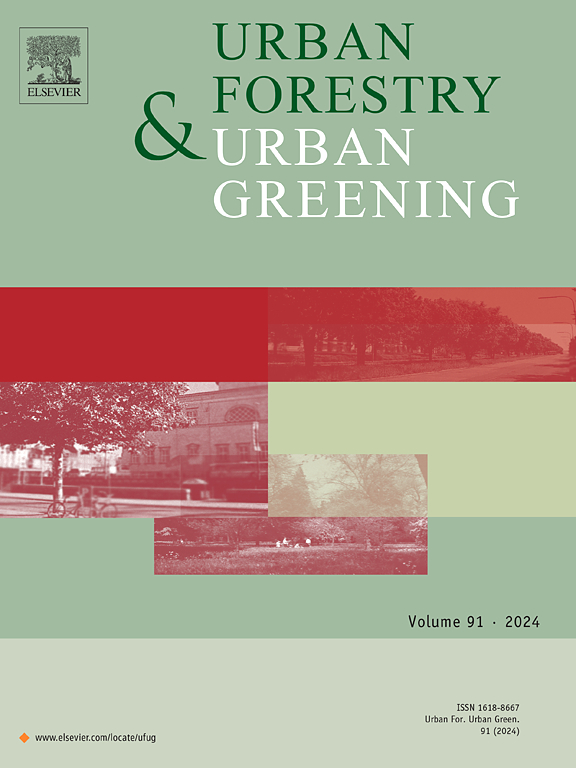How does Blue-Green Infrastructure affect the urban thermal environment across various functional zones?
IF 6
2区 环境科学与生态学
Q1 ENVIRONMENTAL STUDIES
引用次数: 0
Abstract
Considering the limited availability of urban Blue-Green Infrastructure (BGI), a principal area of focus in this research is identifying methods to maximize their cooling effects more effectively. Previous research has identified varying dominant factors in mitigating the urban heat island effect through the spatial arrangement of BGI. However, research on the specific mechanisms of these factors within different urban functional zones (UFZs) and their interactions with human activities remains insufficient. In this research, the influence of the BGI landscape index on surface temperature in different UFZs is explored through a random forest model, using Changchun, China as a case study. Results indicate that 1) Reducing the patch density of Green Infrastructure to 50 patches/ha can effectively lower surface temperature in Ecological Zones. 2) In other UFZs, the percentage of landscape of Green Infrastructure typically acts as a crucial factor contributing to the cooling effect. 3) Enhancing connectivity and proportional area of Blue Infrastructure markedly advances the cooling impacts in Ecological Zones. This study offers data-driven empirical evidence for advancing urban planning and environmental management strategies. It emphasizes the need to incorporate proper BGI patterns and urban functions in planning processes to effectively mitigate the urban heat island effect.
求助全文
约1分钟内获得全文
求助全文
来源期刊

Urban Forestry & Urban Greening
FORESTRY-
CiteScore
11.70
自引率
12.50%
发文量
289
审稿时长
70 days
期刊介绍:
Urban Forestry and Urban Greening is a refereed, international journal aimed at presenting high-quality research with urban and peri-urban woody and non-woody vegetation and its use, planning, design, establishment and management as its main topics. Urban Forestry and Urban Greening concentrates on all tree-dominated (as joint together in the urban forest) as well as other green resources in and around urban areas, such as woodlands, public and private urban parks and gardens, urban nature areas, street tree and square plantations, botanical gardens and cemeteries.
The journal welcomes basic and applied research papers, as well as review papers and short communications. Contributions should focus on one or more of the following aspects:
-Form and functions of urban forests and other vegetation, including aspects of urban ecology.
-Policy-making, planning and design related to urban forests and other vegetation.
-Selection and establishment of tree resources and other vegetation for urban environments.
-Management of urban forests and other vegetation.
Original contributions of a high academic standard are invited from a wide range of disciplines and fields, including forestry, biology, horticulture, arboriculture, landscape ecology, pathology, soil science, hydrology, landscape architecture, landscape planning, urban planning and design, economics, sociology, environmental psychology, public health, and education.
 求助内容:
求助内容: 应助结果提醒方式:
应助结果提醒方式:


